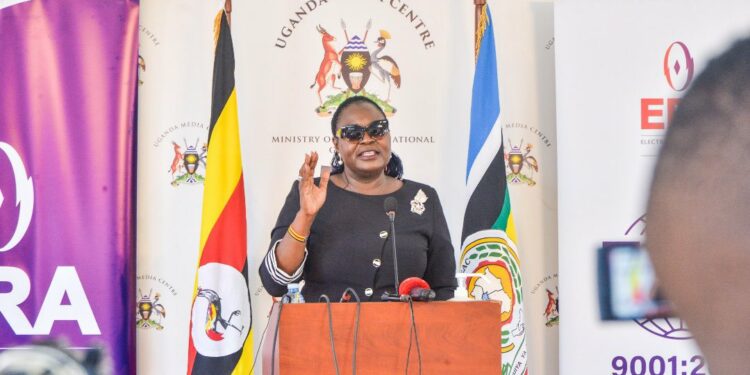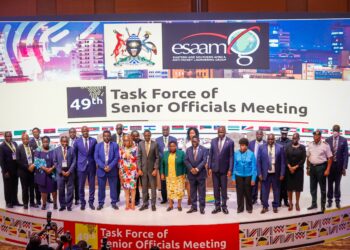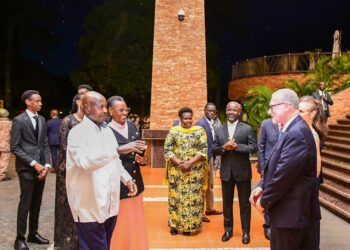The Minister of Energy and Mineral Development Ruth Nankabirwa Ssentamu on Thursday outlined a series of milestones achieved in 2024 and ambitious plans for 2025 during a media briefing at the Uganda Media Centre.
Addressing journalists at the Media Center, she highlighted new electricity tariffs, enhanced energy infrastructure, and strategic initiatives to foster sustainable development.
Highlighting affordability, the minister celebrated a 5.2 percent reduction in the weighted average end-user electricity tariff. “This milestone translates to UGX 155 billion in savings, demonstrating our commitment to making electricity affordable and promoting industrialization,” Nankabirwa remarked.
Introducing a specialized Public Amenities tariff category provides much-needed relief for institutions such as referral hospitals. “A reduced tariff of 360 Ush/kWh from 775.7 Ush/kWh is a significant step in supporting our health sector,” she added, emphasizing the ministry’s dedication to improving essential services.
In 2024, Uganda’s installed electricity generation capacity reached 2,051.6 MW, thanks to projects like the 600 MW Karuma Hydropower Plant and the 20 MW Xsabo Nkonge Solar Plant in Mubende. “The completion of Nyagak III, currently 98% complete, will further strengthen Uganda’s energy supply and foster growth in underserved regions,” the minister noted.
Among the notable achievements was the installation of Uganda’s first-ever submarine electricity cable, connecting Kalangala District to the national grid. “This has not only improved power reliability but also significantly lowered tariffs on Kalangala Island, driving local development,” Dr. Nankabirwa explained.
The ministry also connected 210 sub-counties to the national grid, raising electricity access to 60% in 2024. Over 197,000 new connections were made last year alone, a significant stride towards universal access. “Electricity is a catalyst for economic transformation, and we are committed to ensuring that no region is left behind,” the minister asserted.
Looking ahead to 2025, Dr. Nankabirwa emphasized the importance of transitioning Uganda’s energy systems toward sustainability. Key initiatives include expanding the national grid, promoting electric mobility, and advancing the development of nuclear power. “We are preparing Uganda for a low-carbon, climate-resilient future while ensuring that energy remains accessible and affordable for all,” she said.
Despite these successes, challenges such as power theft and infrastructure vandalism persist. “We are actively enforcing the Amended Electricity Act (2022) with stringent penalties to deter such actions,” the minister assured.
The ministry’s broader plans include formalizing artisanal mining, redeveloping the Kilembe Copper Mines, and fostering value addition in the mineral sector. “These initiatives will not only boost our economy but also create employment opportunities for thousands of Ugandans,” Nankabirwa said.
According to Nankabirwa, as Uganda steps into 2025 her ministry stands poised to drive the nation’s socio-economic transformation through innovative energy solutions and infrastructure development. “We are dedicated to fostering economic growth, improving the quality of life for all Ugandans, and ensuring a brighter, sustainable future.”
Do you have a story in your community or an opinion to share with us: Email us at editorial@watchdoguganda.com













